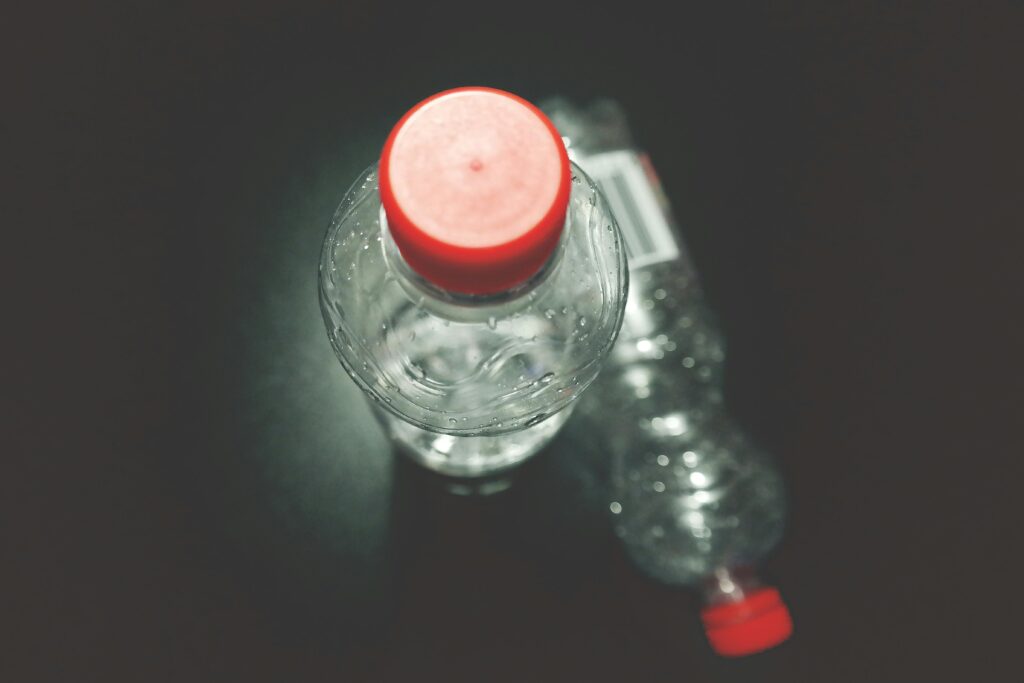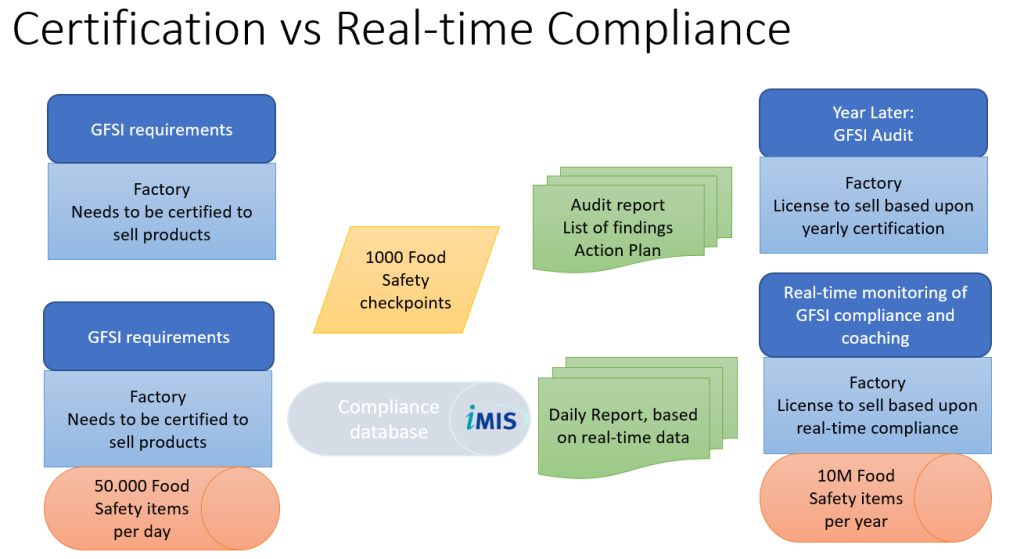Purpose and Scope
The purpose of this procedure is the demonstrable control of the microbiological condition of the products, environment and hands (materials, equipment, environment & people). The procedure includes the process of sampling, analysis, registration and processing of results and registration of measures taken in response to legislation, deviations and trends.
Definitions
| Microorganisms | Bacteria, yeasts and fungi, etc. |
| Material | Sustainable production tools such as machines, means of transport and conveyor belts |
| Counter-monster | A sample that is kept in reserve, without it being clear in advance whether, and if so, what analyses will be carried out with it |
| Microbiological shelf-life testing | A form of product research in which the retention period is determined or confirmed |
| CFU | Colony-forming units, plate count of microorganisms |
Responsible
| Process | Responsible | Executive | Supporting |
| Process Officer | QA manager | QA employee |
Procedure
The microbiological examination is planned on the basis of the annual plan. This describes the minimum frequency of the various examinations. The microbiological examination can be divided into product examination (materials; raw material, semi-finished or finished product), environmental examination (equipment, air, rooms) and examination of hands and gloves (human). All microbiological and chemical research is outsourced. An external laboratory is used for this purpose. For this purpose, a sampling and examination schedule is prepared annually by the QA manager and his staff.
Product Research
Based on an annual plan that is based on EU Regulation (EC) 2073/2005, a number of products that fit into that range are examined. Furthermore, through iMIS a number of inspections are shot off which were recorded at article level. The (counter) samples are then taken upon entry or production and put on the warehouse of the QA department. The counter samples are kept at least until the tht date.
From the stock of counter samples, in accordance with the sampling plan, samples are taken. These are analyzed by an external laboratory. It is also possible that employees from the QA department take samples during production. The standard against which the test is performed is given in the product specification of the article concerned. The results of the investigation are assessed and archived. If desired, an investigation report can be drawn up.
Microbiological surface research
Het microbiologisch onderzoek van gereinigd en gedesinfecteerd materieel en ruimten wordt met behulp van contactafdrukplaatjes en / of swabs uitgevoerMicrobiological examination of cleaned and disinfected equipment and rooms is performed using contact impression plates and/or swabs.
For the contact plates, there are a number of fixed sampling points which are sampled periodically to check the hygienic condition and whether cleaning has been performed properly. For the swabs, samples are also taken over time to check the hygienic condition and whether cleaning has been carried out properly. Each sample point can be classified as high or low care if required. High care are surfaces that can directly influence the product quality. Examples of Low care surfaces are floors and walls.
The sampling is preceded by a visual check because it makes no sense to sample visibly dirty surfaces. When a surface is optically dirty it is reported and included in the score. An exception to this is the taking of environmental samples for the presence of Listeria monocythogenes. These should be taken immediately before cleaning because there will be indications of the presence of Listeria monocythogenes sooner than after cleaning.
Assessment of agar plate results is done according to the following standard.
| CFU | Assessment | Coding |
| 0 t/m 2 | Good | 0 |
| 3 t/m 9 | Sufficient | 1 |
| 10 t/m 29 | Moderate | 2 |
| 30 t/m 90 | Insufficient | 3 |
| > 90 | Bad | 4 |
The results of the survey are reviewed and archived. A report of each survey is prepared and distributed within the organization. Examination of the effect of cleaning hands (this is an optional evaluation). When examining the effectiveness of washing and disinfecting hands and gloves before entering production, at least a number of people are checked by means of the rinsing method (sampling by placing the hand in a sampling fluid) or by making a contact print.
The tricky part of hand examination is that there are no generally accepted standards for a cleaned and disinfected hand. Also, a washed hand may have a higher bacterial count than an unwashed one. This is caused by bacteria that occur naturally in the skin and may rise to the surface through washing. The results of the examination are reviewed and archived. A report of each survey is prepared and distributed within the organization (feedback).
Trend analyses should be made of all microbiological studies and certainly those under EU Regulation 2073/2005.
Deviations
When results deviate from the maximum standard then: The QA manager and Production manager are notified; In case of deviations, which are related to insufficient cleaning and/or disinfection, appropriate measures are taken. Additional cleaning and disinfection will be applied, especially if Listeria monocythogenes are found in the environmental samples. Also, additional training and extra instructions can be drawn up or the cleaning and disinfection plan will be adjusted.
If food safety could be endangered then because pathogenic microorganisms or histamine are found in end products, the recall team is called and the new Food and Consumer Product Safety Authority is informed of the excess on the Dutch number (0800-0488). Additional measures are also taken to prevent further contamination as described in Article 7 of Regulation (EC) 2073/2005. All actions are recorded in writing in a report.
OntroInadequate results Article 7 of regulation EC 2073/2005
- Indien bij het testen aan de hand van de in bijlage I vastgestelde criteria ontoereikende resultaten worden verkregen, nemen de exploitanten van If testing against the criteria set out in Annex I produces unsatisfactory results, food business operators shall take the actions indicated in paragraphs 2, 3 and 4 as well as other corrective actions established in their HACCP procedures and other actions necessary to protect consumer health. In addition, they shall take measures to identify the cause of the unsatisfactory results in order to prevent the recurrence of the unacceptable microbiological contamination. Those measures may include modifications of HACCP-based procedures or other applied food hygiene measures.
- If testing against the food safety criteria set out in Chapter 1 of Annex I produces unsatisfactory results, the product or batch of foodstuffs shall be withdrawn from the market or recalled in accordance with Article 19 of Regulation (EC) No 178/2002. However, products placed on the market which are not yet at retail level and which do not comply with food safety criteria may undergo further treatment eliminating the hazard in question. This treatment may only be carried out by food business operators who are not engaged in retailing. The food business operator may use the consignment for purposes other than those for which it was originally intended, provided that this does not pose a risk to public or animal health, that this use has been decided within the framework of procedures based on HACCP principles and good hygiene practice and that it has been authorised by the competent authority.
Related articles to Procedure: determining microbiological proficiency
Many customers and visitors to this page 'Procedure: determining microbiological proficiency' also viewed the articles and manuals listed below:



